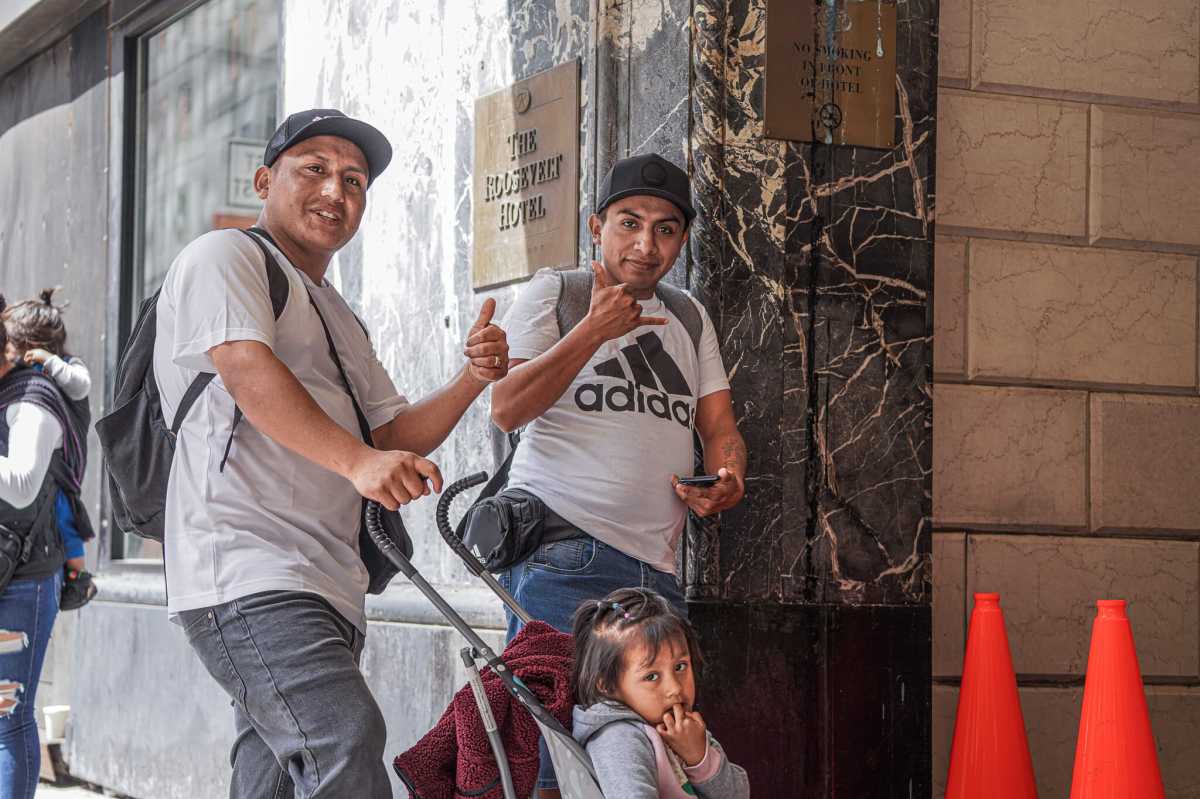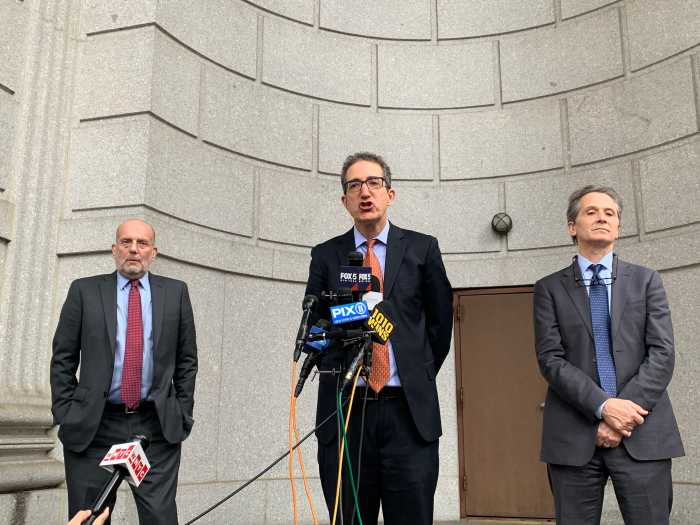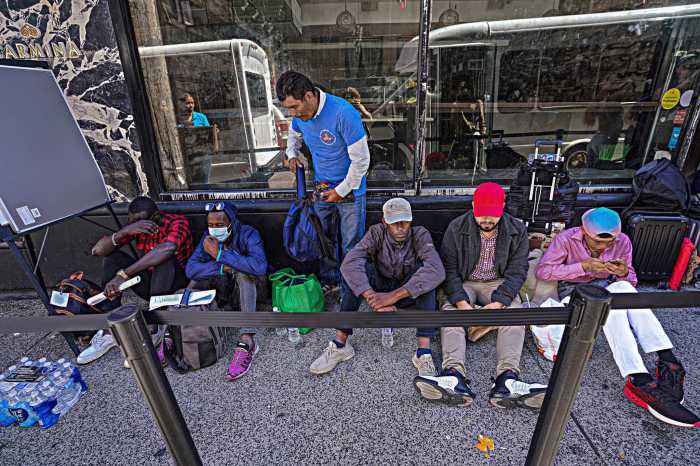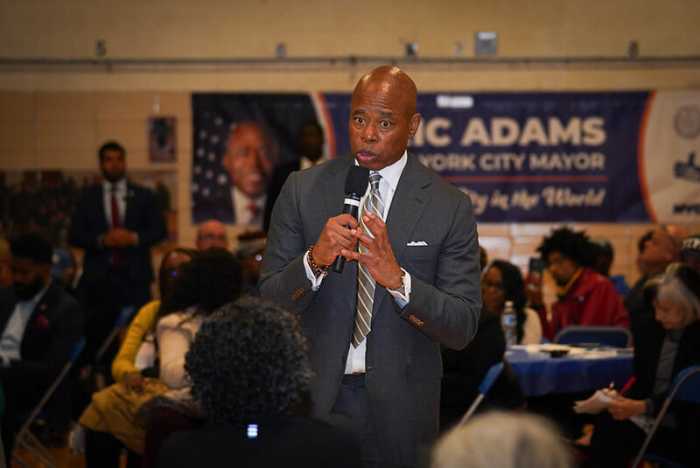After announcing last week the city will begin limiting shelter stays for single adult migrants to 60 days, Mayor Eric Adams said Monday there is “no guarantee” that those who cannot obtain other housing within that timeframe will be able to secure a new shelter placement when they reapply.
Last week, Adams unveiled the new policy, which will see notices sent to single adult migrants informing them that they have 60 days to find other lodgings, as the Big Apple’s homeless and emergency shelter population has swelled to over 105,000 people — mostly due to recently arrived asylum seekers. During last week’s announcement, Adams said the policy will help free up shelter space for migrant families with children, who make up the majority of new arrivals.
When making the announcement, Adams emphasized the city has run out of room for putting up any additional newcomers.
The city is pairing the 60-day limit on shelter stays with increased case management, Adams said last week, aimed at transitioning more migrants out of shelters and into permanent housing. Those who don’t find new accommodations within the given time period must go back to the Roosevelt Hotel, which is serving as an intake center for recent arrivals, and reapply for another shelter bed.
But during an unrelated press conference on July 23, the mayor remarked that migrants who reapply to the shelter system may not be able to nab a new placement.
“There’s no guarantee on your reapplication,” the mayor told reporters. “We’re going to try to do the best we can, as we have always done. But this is not sustainable and I’m not going to give the false impression that it is.”
When asked for further details on what will happen to those whose applications for another shelter bed are denied, a City Hall spokesperson declined to give an exact answer.
“We always do our best to place people,” they said. “But as we’ve said, New York City is at capacity and we need federal support on this national issue.”
Despite being pressed by a reporter, Adams also did not provide an exact metric for how many migrants he’d like to see leave shelters as a result of the policy. He explained that’s due to the fact that the city is continuing to see roughly 2,500 new arrivals every week.
“It’s not like, okay, let’s deal with this number and then, we can say, ‘Okay, we’re finished,’” he said. “No. It’s just continuing … And so the tabulation on how we’re doing it, the team is trying to be as clear as possible, as transparent as possible, the numbers that we’re getting in, the numbers that are leaving, and this is a constant moving target.”
During a separate news briefing last week when he introduced the policy, Mayor Adams insisted its “goal” was not to increase the city’s street homeless population, but he didn’t rule out the possibility that could happen.
Critics hit ‘bad policy’

Soon after that announcement, elected officials and advocates quickly started raising alarms that it would lead to more migrants sleeping in public spaces.
“This is a bad policy that will be directly responsible for leaving families homeless and living on the streets,” said New York Immigration Coalition Executive Director Murad Awawdeh in a statement last week.
However, Josh Goldfein, a staff-attorney with the Legal Aid Society, said he believes the mayor is striking such a dire tone as a way of discouraging more migrants at the southern border from traveling to the city. The administration has even started circulating flyers telling migrants to consider cities other than New York at the southern border.
He added the administration has “acknowledged” to Legal Aid that it must find new shelter beds for those unable to secure outside accommodations within 60 days.
“When that time arrives for somebody, 60 days after they get those notices, the city will meet with them and they will try to identify some other places that the person could go,” Goldfein said. “But at the end of the day, if that person has nowhere to go, the city has acknowledged to us that that person is entitled to another placement. And we’re just going to be monitoring very carefully what the city says to people when that day comes. But it is still a long way off.”
Goldfein added that most migrants the policy applies to usually move out of shelter sooner than 60 days, so it’s likely a small group that will be impacted. He added that, so far Legal Aid has “not even seen” any 60-day notices given out.
The Legal Aid attorney said he hopes that 60 days after the first notices are distributed, the city will start receiving far more assistance from Albany and Washington and will have found ways to relocate a large portion of migrants from shelters to permanent housing.
The federal government in particular has up until now not provided the city with much aid, even though Adams has pleaded with it for months to give the city more money in reimbursements and expedite migrant work permits.
“The hope is that by then the state will have lived up to its obligations to provide more assistance, so that there are more places for people to go,” he said. “The federal government may have changed its policies to make it easier for people to get work authorization. And the city will have done more to move people out of shelters so that there are more places and then we won’t face this problem.”






































